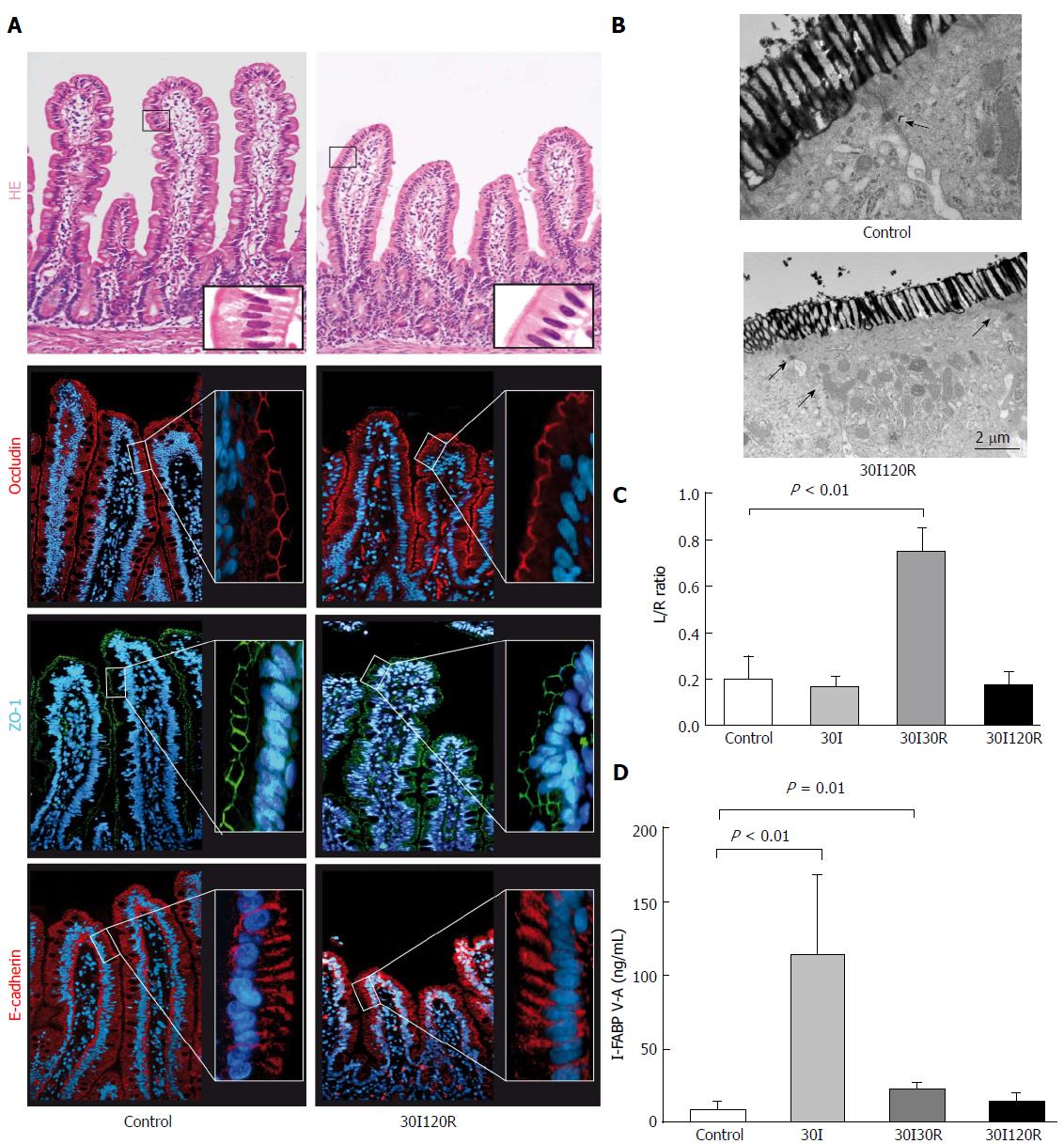Copyright
©The Author(s) 2017.
World J Gastroenterol. Dec 28, 2017; 23(48): 8452-8464
Published online Dec 28, 2017. doi: 10.3748/wjg.v23.i48.8452
Published online Dec 28, 2017. doi: 10.3748/wjg.v23.i48.8452
Figure 4 The intestinal barrier is restored after 30 min of ischema followed by 120 min of reperfusion.
A: At 120 min of reperfusion (30I120R) the epithelial lining appeared histologically intact compared to control tissue with ZO-1, occludin and E-Cadherin normally distributed across the villi.); B: In addition, electron microscopy revealed that lanthanum was no longer present in the paracellular spaces, indicating restored tight junction integrity; C: Moreover, the observed restoration of the intestinal barrier seems to correlate with permeability with the plasma L/R ratio normalized to 0.17 ± 0.06 which was no longer significantly different from control; D: Plasma I-FABP levels, reflecting intestinal epithelial damage, also returned to 14.77 ng/mL ± 5.46 ng/mL and were no longer significantly elevated compared to control. Electron microscopy scale bars = 0.5 μm and 2 μm respectively.
- Citation: Schellekens DH, Hundscheid IH, Leenarts CA, Grootjans J, Lenaerts K, Buurman WA, Dejong CH, Derikx JP. Human small intestine is capable of restoring barrier function after short ischemic periods. World J Gastroenterol 2017; 23(48): 8452-8464
- URL: https://www.wjgnet.com/1007-9327/full/v23/i48/8452.htm
- DOI: https://dx.doi.org/10.3748/wjg.v23.i48.8452









